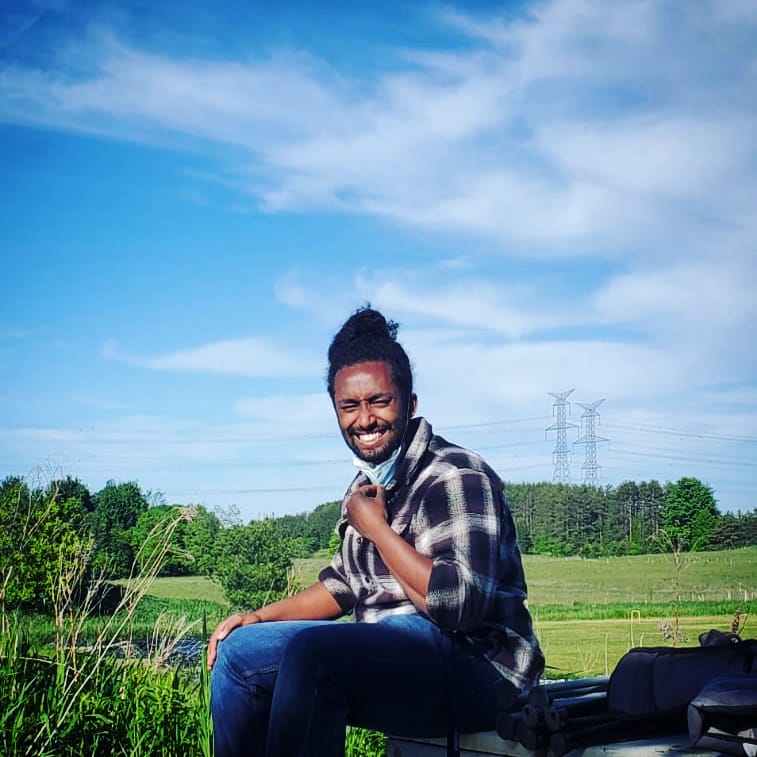
(He/Him)
🎙 Tell us about yourself?
I am a second-year Ph.D. student researching physical and environmental sciences under the supervision of Dr. Marc Cadotte. I have a deep interest in the environment, its connection to people, and our dependence on it for sustenance. From a young age, I have pursued available opportunities to learn more about our natural world through continued education, practical experience, and participating in environmental extracurriculars. I am currently a Ufor fellow, a recipient of the TD Graduate Scholarship in Environmental Science, a former University of Toronto School of Cities Fellow, a founding member of a University of Toronto Scarborough student magazine “The Valley”, and the 2020 – 2021 Graduate Students’ Association at Scarborough President. I have been heavily involved in student life at the University of Toronto Scarborough and am continually looking for opportunities to collaborate on environmental, ecological, and cities-oriented research.
🎙 What are your research interests & what are you currently researching?
My driving interests revolve around how we can restore habitats in and around cities to better provide services to people while maintaining core ecological processes important to conserving biodiversity and habitats. Understanding the relationship between a city and its green spaces is important to solve many of the global issues we face today, such as climate change, species & habitat loss, and human well-being. I believe taking interdisciplinary approaches is critical to understanding key questions in environmental sciences and providing solutions to novel challenges. I am therefore excited to begin research that supports our understanding of dynamical urban ecological systems while serving human and environmental needs. I am currently researching how tree morphophysiological processes and plant community structure/composition respond to the environmental stresses in urban environments. In addition, I am interested in how mutualistic and competitive interactions between individuals and populations act to mitigate or exacerbate these relationships.
🎙 What is the significance of your current research?
Due to the degraded nature of urban green spaces, the delivery of beneficial services provided by species and biodiverse communities may vary due to urban restrictions. Additionally, current global challenges can be traced back to local problems of environmental pollution and habitat degradation, and areas in most need of the inclusion of green spaces are often most degraded. This limits the ability of maladapted species to persist in resource-poor environments and may result in restrictions on biodiversity which has been related to the provision of critical ecosystem functioning. The significance of this research is in its determining of challenges to the success of forest restoration initiatives that provide ecosystem functions to human and natural communities. This specifically focuses on urban sites, where assessing and describing the socioeconomic and environmental determinants of reforestation success will support the achievement of successful environmental restoration initiatives into the future.
🎙 Any interesting insights/results so far related to your research?
Currently, there are several approaches to assess how intensely a location in a city has been developed, and this has important implications for the challenges a restoration initiative will face. I explore different measures of urbanization and their ability to predict environmental changes in restoration sites, as well as their impacts on restored communities. I will test these hypotheses during the 2022 summer field season and look forward to sharing my results.
🎙 What aspirations do you have for your research? How do you see it being utilized?
The goals for my research are centered around having direct application to restoration projects in their planning, implementation, and completion. I would like to see my research help in the planning of appropriate biodiverse communities that are well-adapted in their traits and interaction networks to support resilient communities and limit the requirement for intervention by practitioners. In addition, I aim to see my research being used to model potential trajectories of restoration initiatives and therefore help managers provide critical interventions when required. Lastly, I would like to see knowledge derived from my research applied to practical tools to help managers and the public assess the resilience of forests and green spaces through their species compositions, structures, and functions, in a low-cost manner.
🎙 Is there anything else you would like to share?
Please check out our graduate student-led, University of Toronto Scarborough based, academic magazine and journal, The Valley, for commentaries, opinion pieces, and academic works from the Scarborough community: https://jps.library.utoronto.ca/index.php/thevalley/issue/view/2424/492